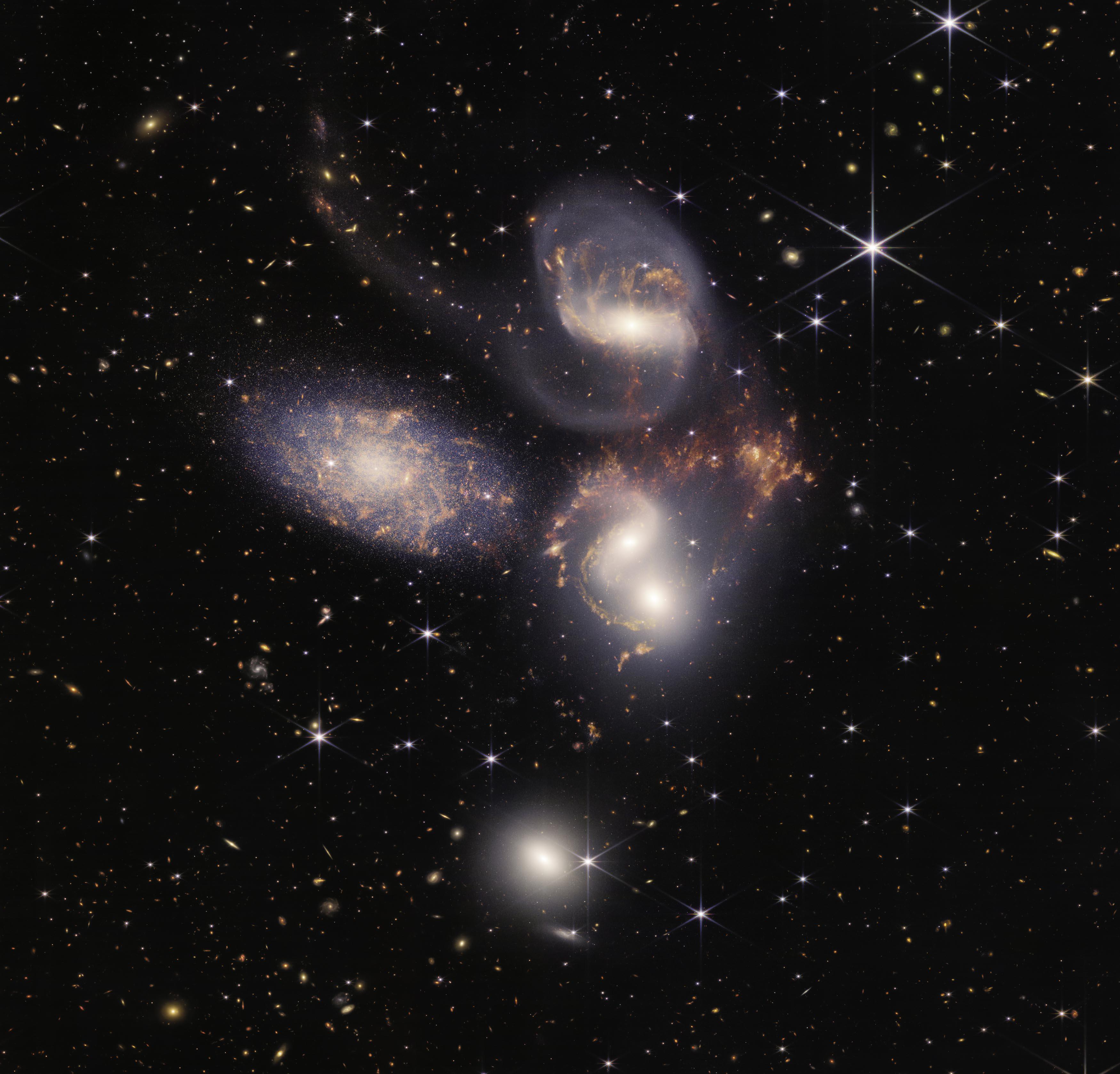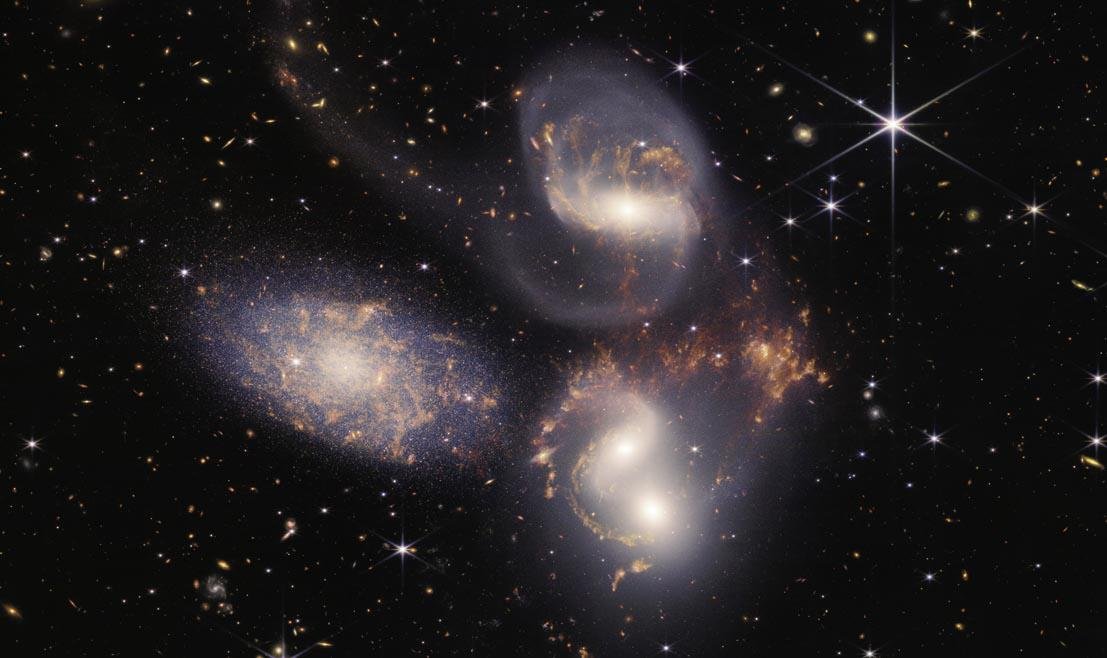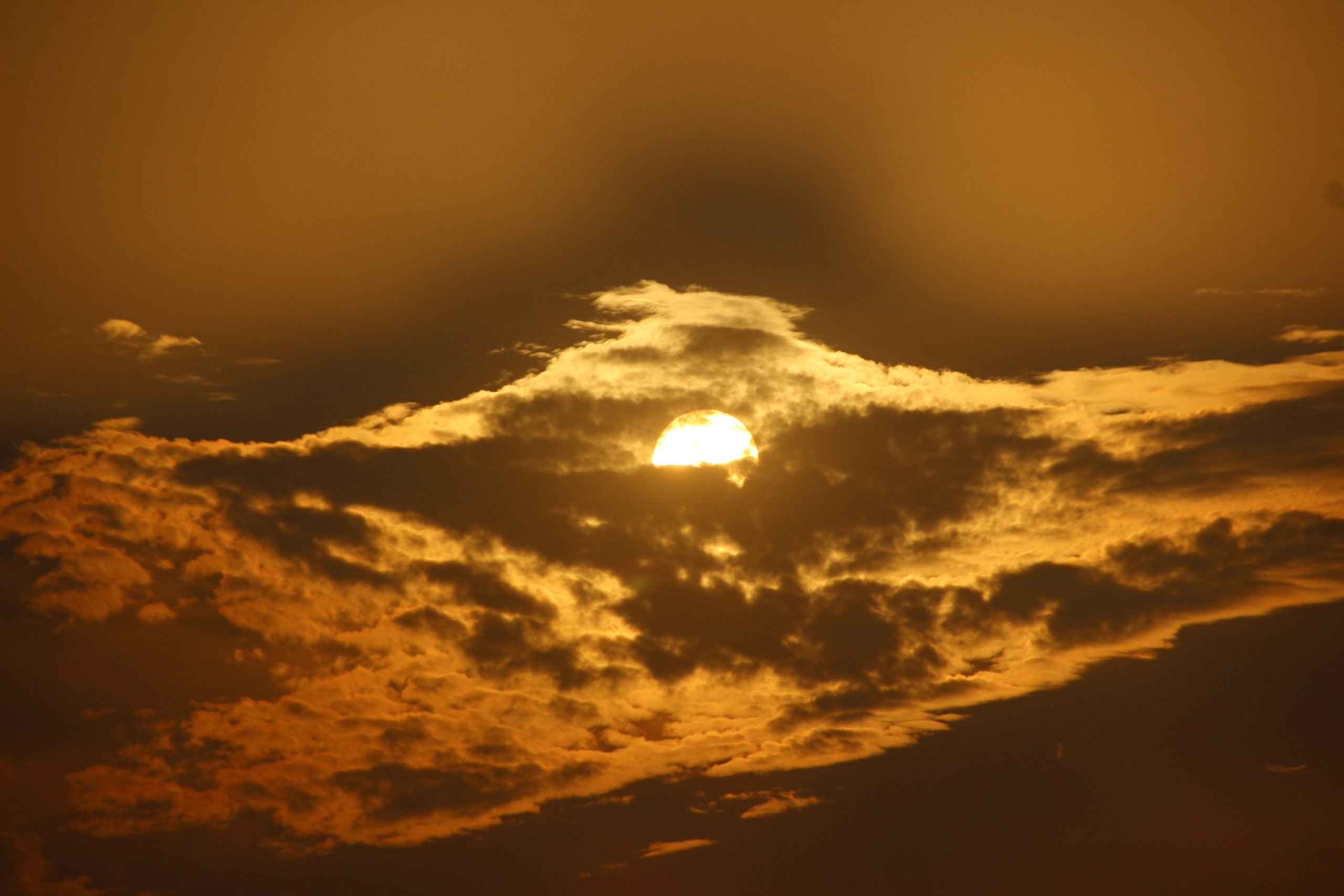Last Tuesday (12), the United States National Aeronautics and Space Administration (NASA) released its first image pack. James Webb Space Telescope (JWST) . A new photo among the images Stephan’s QuintetA group of five galaxies located in the constellation Pegasus.
The quintet was discovered by the French astronomer Édouard Stephan in 1877 and photographed by Hubble a few years earlier. However, the infrared technology used in JWST allows it to capture high-resolution spatial images that show never-before-seen details.
The galaxy group image contains over 15 million pixels and was created from 1000 different files – the photo is considered Webb’s largest to date. Details include gas tails, stardust, millions of young star clusters, five glowing galaxies, among other cosmic compositions.
Composition of the quintet
The quintet is also known as Hickson Compact Group 92, but only four galaxies are actually close together. It is called the fifth galaxy on the far left. NGC 7320 and about 40 million light-years from Earth. four other galaxies, called NGC 7317, NGC 7318A, NGC 7318B and NGC 7319about 290 million light-years away — NGC 7320 is about seven times closer to Earth and therefore appears in the foreground of the photo.
Although it may seem extremely distant – some galaxies billions of light-years away – studying groups like Stephen’s Quintet is extremely important to scientists. For example, the researchers found that NGC 7319 has an active galactic core with a supermassive black hole equal to 24 million times the mass of the sun – so it absorbs everything around it and emits a powerful light equivalent to 40 billion times the sun. suns.
Stephen Quintet Galaxies
According to NASA, the three galaxies in the quintet “have distorted shapes, long spiral arms, and long, gaseous tidal tails with abundant star clusters.” Even the information captured by the telescope offers details such as the ages of stellar populations or even groups of stars that are not visible in visible light.

NGC 7319 is the galaxy in the upper right, almost centre, with spiral arms rotating 180 degrees – the blue dots and red dots represent star clusters. In the center of the image, galaxies NGC 7318A and NGC 7318B have pink hydrogen clouds and young blue stars less than 10 million years old – on the far right, next to the galaxies, many star clusters are forming.
In the upper left corner, dwarf galaxy NGC 7320 has blue and pink formations caused by starbursts. In the lower left corner is NGC 7317, more common and not so much gravitational interaction.
space technology
The James Webb Space Telescope used the Near Infrared Spectrograph (NIRSpec) and Intermediate Infrared Instrument (MIRI) infrared sensors to capture all the details of Stephan’s Quintet. According to NASA, these devices’ integrated field units (IFUs) combine the camera and spectrograph to provide “data cubes” or image files of the spectral features of a galactic nucleus.
The researchers say that IFUs work like a medical MRI scan, allowing the information to be truncated into multiple files for more advanced study.
For example, the technology allowed Webb to pierce the dust cover around NGC 7319’s core, so researchers discovered hot gas near the black hole at the galaxy’s center – they were also able to measure the speed of bright light. streams. , powered by a black hole, never before recorded in detail.
Source: Tec Mundo
I am Bret Jackson, a professional journalist and author for Gadget Onus, where I specialize in writing about the gaming industry. With over 6 years of experience in my field, I have built up an extensive portfolio that ranges from reviews to interviews with top figures within the industry. My work has been featured on various news sites, providing readers with insightful analysis regarding the current state of gaming culture.













